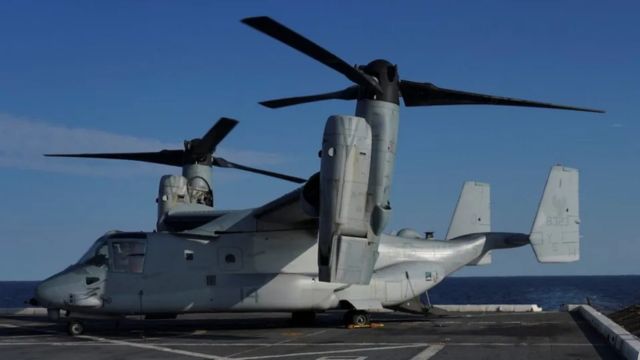A week after the tragic crash off the coast of Japan, where eight Air Force Special Operations Command service members lost their lives, the Pentagon made a significant decision on Wednesday. It announced the temporary suspension of all Osprey V-22 helicopters in its fleet.
The decision stemmed from a preliminary assessment of the recent crash, indicating a material failure with the aircraft rather than any errors by the crew. In response to this finding, the Air Force, Navy, and Marine Corps collectively decided to ground hundreds of Osprey V-22 helicopters in an unprecedented move.
In the aftermath of the tragedy, there are heightened concerns about the safety of the Osprey, given its involvement in multiple unfortunate incidents during its brief service history. In response to the recent incident, Japan took a precautionary measure by grounding its entire fleet of 14 Osprey ships.
Lt. Gen. Tony Bauernfeind, the chief of the Air Force Special Operations Command, took decisive action by ordering a standdown. The command issued a statement explaining that this measure was implemented to reduce risks while the investigation is ongoing. Preliminary information from the investigation suggested that the mishap might have resulted from a material failure, although the specific cause of the failure remains unknown.
Naval Air Systems Command has issued a notice stating the grounding of all Ospreys. This includes both the Marine Corps and Navy versions of the aircraft.
The Air Force did not specify the duration of the aircraft’s grounding but mentioned that the standdown is expected to continue until the investigation provides recommendations for the fleet to resume operations and identifies the cause of the incident in Japan.
The Osprey, a U.S.-manufactured aircraft, is a hybrid that can operate like a helicopter for takeoff and landing but can achieve higher speeds during flight by rotating its propellers forward.
The unique design of the Osprey has been linked to several incidents. While the investigation into last week’s event is still in its early stages, it has refocused attention on the aircraft’s safety record, especially concerning a mechanical clutch issue that has been a persistent problem for over a decade. Questions have also arisen regarding whether all components of the Osprey meet safety regulations.
In August, the Marines found that a clutch failure contributed to a serious Osprey crash in 2022, but the exact cause remained unknown. The crash report warned that without improvements to flight control system software, drivetrain component material strength, and stringent inspection requirements, future incidents “are impossible to prevent.”
The U.S. Marine Corps operates around 400 Ospreys, the U.S. Navy has 27, and the Air Force Special Operations Command has 51.




